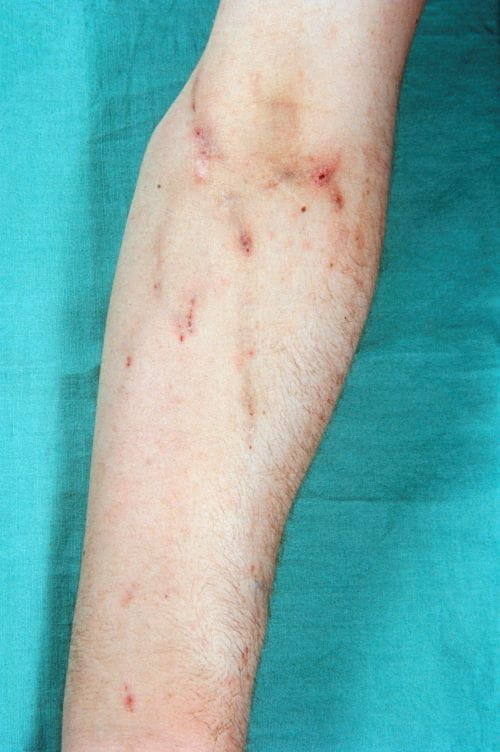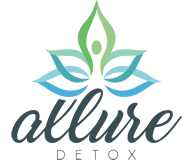Track marks are injection marks on arms and the scars which remain after a person shoots up a drug, and these are the tell-tale signs of chronic intravenous drug use. The act of drug injection is often referred to as “jacking up,” “shooting up,” or “slamming” and is typically identified with the use of heroin, cocaine, methamphetamines, and opiates.

Table of Contents
What Do Track Marks Look Like?
Track marks can look like small holes in the skin in various stages of healing. New puncture wounds may look bright red or pink, and scabs or recent scar tissue may cover the skin. Older track marks can look like white or light pink healed scars. Track marks can appear as puncture wounds or as discolored and scarred veins. The appearance of track marks is not only a sign of drug use; they also carry a social stigma due to the health risks that are associated with this drug sub-culture.
Track marks are often noticeable along the forearms, where visible veins are present, although they can be anywhere on the body that has been used as an injection site. But after infection of the forearms, the most frequently used site, addicts begin injecting drugs via other parts of the body, such as the neck, groin, hands, and feet. Many IV drug users are conscious of their track marks, prompting them to hide the visible signs of shooting up.
What are the Dangers of Having Track Marks?

The use of unsanitary needles can lead to severe skin infections, such as cysts, abscesses, and ulcers. One of the health problems associated with track marks is collapsed veins. Damage occurs to the lining of the vein, causing blood clots to form within. The vein can become blocked entirely with continued use of blunt needles, constant use of the same injection site, or improper injection techniques.
If not treated, permanently damaged veins can never be healed. Poor circulation can lead to brain problems, heart problems, stroke, kidney disease, and cyanosis of the limbs due to a lack of adequate oxygen supply. With cyanosis, limbs may feel numb and tingly and turn blue or black due to lack of circulation.
Those who share needles are at risk of contracting HIV, Hepatitis B and C, Tuberculosis, and multitudes of other blood-borne bacterial, fungal and viral infectious agents. The chances of catching a disease from a single needle stick are usually meager. But for hepatitis B, the odds can be as high as nearly 1 in 3 if the person hasn’t been vaccinated for it.
Hepatitis B (HBV) and hepatitis C (HCV) are the most common viral hepatitis infections transmitted through the sometimes risky behaviors by people who use drugs—particularly among people who inject drugs. (NIH)
Based on the data available for analysis as of January 5, 2020, by the Centers for Disease Control and Prevention, CDC, there were, within 12 months, ending on June of 2019, 67,165 reported drug overdose deaths within the 50 states and the District of Columbia of the United States.
How Can Allure Detox Help an IV Drug Addict?
We are not an old-fashioned detox center, as not all detox centers are created equal. In the past, before addiction was understood, addicts were treated like criminals. We don’t force any way of life on patients because our methods are updated, which is why we stand out. We provide much more than the bare minimum.
Our services meet our patients’ specific medical, mental, social, occupational, and family needs independently. No two individuals are the same, and therefore, we create a recovery strategy exclusive to each addict and their needs. Take the first step towards recovery by reaching out to one of our confidential professionals at Allure Detox.
FAQ
What do track marks look like?

